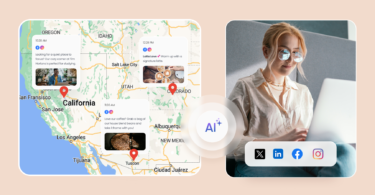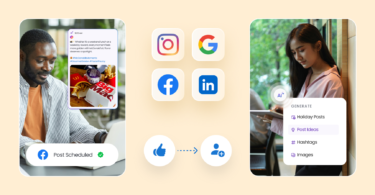In a landmark move to protect children online, the Australian government has introduced sweeping new social media legislation set to take effect in 2025. The Online Safety Amendment (Social Media Minimum Age) Act 2024 will make it illegal for children under the age of 16 to create accounts on specific social media platforms. Tech companies will be held legally responsible for verifying users’ ages for the first time, with heavy fines for non-compliance.
These new social media laws Australia reflect growing national concern over the risks of children’s early exposure to digital platforms. This includes the impact of early social media use on mental health, safety, and child development. With this legislation, Australia is leading the charge globally in placing stronger legal age-based limits and aiming to make the internet safer for the next generation.
In this blog, we’ll break down what this legislation means and how it fits into the broader goal of creating a safer digital environment.
Table of contents
- What is the new social media law in Australia
- Key components
- Implementation date
- What does it mean for young people?
- How parents and carers can help
- Creating a holistic regulatory environment
- Final thoughts
- Frequently asked questions on new social media laws in Australia
- How Birdeye can help businesses adapt to the new social media laws in Australia
What is the new social media law in Australia
The law introduces several key obligations for social media companies, with an emphasis on age control, compliance, and privacy protection.
Mandatory minimum age limit
The new law’s central feature is the establishment of a mandatory minimum age of 16 for users to create accounts on specified social media platforms. This measure aims to reduce risks such as cyberbullying, exploitation, and harmful content exposure among younger users.
Importantly, parental consent will not override this rule—platforms are legally required to deny access to anyone under the age threshold, regardless of family preferences.
By setting a clear age limit, the law seeks to delay early exposure to online environments that may be unsuitable or unsafe for children and young people.
New penalties
The legislation introduces strong financial penalties for non-compliance to ensure platform accountability. Companies that fail to implement effective age-verification systems could face fines of up to AUD $50 million.
This signals a shift in regulatory pressure, from families and users to corporations and digital service providers.
Note: With these penalties, the government is making it clear that enforcing age limits is not optional—it’s a legal responsibility.
Key components
The law’s framework outlines how platforms are expected to comply while protecting user privacy:
- Age verification: Platforms must implement reliable systems to confirm that users meet the age requirement.
- Platforms affected: Facebook, Instagram, TikTok, Snapchat, Reddit, and X (Twitter).
- Privacy protection: Any data collected for age assurance must be securely managed and used only for verification purposes.
- Enforcement focus: Platforms, not parents or users, are responsible for restricting underage access to social media accounts.
- Exemptions: Services primarily offering health, education, or private messaging features may be excluded.
Platforms are expected to take reasonable steps to identify and block underage users. This includes deploying age assurance technologies that can effectively verify user age without compromising personal data security.
These components reflect a modern, balanced approach strengthening the Online Safety Act while respecting human rights, protecting user privacy, and ensuring access to essential digital services.
Implementation date
The rollout of the new legislation follows a defined timeline:
- 2024: The Bill passed into law following debate and consultation.
- 2025: Enforcement begins. Platforms are expected to have compliant systems in place by December 2025.
As the deadline nears, companies, families, and regulators must prepare for a significant shift in how young people engage with social media.
What does it mean for young people?
For many teens under 16, this law may result in losing access to the platforms they regularly use. While this may seem like a setback, the legislation concerns mental health and well-being. Evidence increasingly links early social media use with anxiety, depression, and harmful online experiences.
This age restriction is intended not to punish youth, but to give them time to grow without the pressure and risks of social media. Reducing exposure can help lower stress levels and improve offline development during key adolescent years.
Learn New Social Media Laws Australia
Want to see the impact of Birdeye on your business? Watch the Free Demo Now.
How parents and carers can help
Although platforms must now restrict access to age-appropriate users, the role of parents and carers remains crucial in fostering healthy online habits.
They can support the law’s goals by:
- Having open conversations with children about online risks and responsible behavior.
- Using parental controls and monitoring tools where appropriate.
- Promoting alternative, age-appropriate digital activities.
Combined with strong platform policies, active parental involvement helps create a safer and healthier online journey for children and young users.
Creating a holistic regulatory environment
This law is not operating in isolation; it’s part of a larger strategy to build a safer digital Australia. The government is taking steps to ensure technology companies meet higher user protection standards. For marketers navigating this shift, like those in dental marketing Australia, understanding platform algorithms and behavioural trends becomes just as important as legal compliance.
Proactive and systemic change
Australia’s approach is about avoiding harm. Instead of waiting for adverse outcomes, the law mandates safeguards that reduce risk.
The government is pushing for long-term cultural and structural change in tech regulation by holding platforms responsible.
Prevention
By raising the minimum age, this law prevents:
- Early exposure to inappropriate content
- Interactions with potentially harmful individuals
- The development of addictive platform behaviors
These preventative measures aim to protect youth before harm occurs, making the digital space more developmentally appropriate. A blanket ban on under-16 access to specific platforms aligns with this preventative ethos and clarifies enforcement for tech providers.
Protection
The law’s standout feature is its emphasis on data protection. Platforms must safeguard personal data collected during age verification and use it solely for its intended purpose.
Protection is not just about keeping children and young people away from harm—it’s also about ensuring their rights and privacy are respected.
Final thoughts
The new social media laws Australia will implement in 2025 represent a significant shift in how it protects its youngest internet users. The government is taking a firm stance on digital well-being by setting a strict age limit, demanding platform accountability, and balancing safety with privacy.
As this law takes effect, it will impact how platforms operate and may serve as a global benchmark for online child safety. It also discusses how digital access, content design, and moderation policies affect Torres Strait Islander people. These discussions extend to other culturally diverse communities in the online space as well.
Frequently asked questions on new social media laws in Australia
As of 2025, the minimum age for joining specified social media platforms is 16. This law applies regardless of parental consent.
The law targets major public-facing social media platforms known for content sharing and user interaction. Platforms focused solely on health, education, or private messaging are exempted.
Platforms are legally required to implement reliable age verification systems, such as ID checks or AI-based tools. This ensures that user data is handled securely and used only for verification.
Companies that don’t prevent underage access or fail to verify users’ ages may face fines of up to AUD $50 million. The government holds platforms, not parents, responsible for enforcement.
The law aims to protect young people from online risks such as cyberbullying, exploitation, etc. It’s part of a broader national effort to improve mental health, digital safety, and platform accountability.
How Birdeye can help businesses adapt to the new social media laws in Australia
As Australia enforces stricter social media regulations, digital platforms and businesses must adapt swiftly and responsibly. Birdeye, a leading reputation and customer experience platform, can support companies in navigating this new landscape.
- Birdeye’s AI-powered content tools can help tailor posts to age-appropriate audiences, ensuring tone and messaging are suitable for adult users.
- The platform’s location and demographic-specific scheduling can prevent content from being pushed in ways that unintentionally attract underage users.
- Monitor engagement and flag inappropriate comments or interactions that may violate new online safety expectations.
As digital safety becomes a national priority, Birdeye empowers businesses to meet compliance standards while strengthening user trust, engagement, and brand reputation.

Originally published








